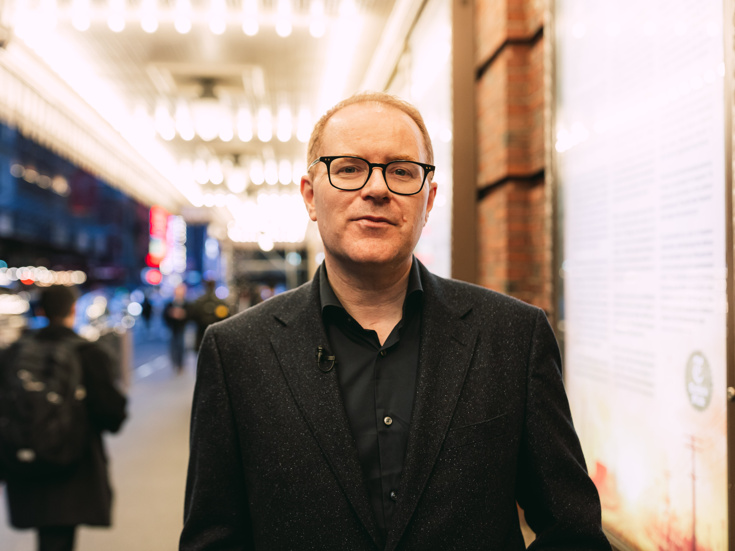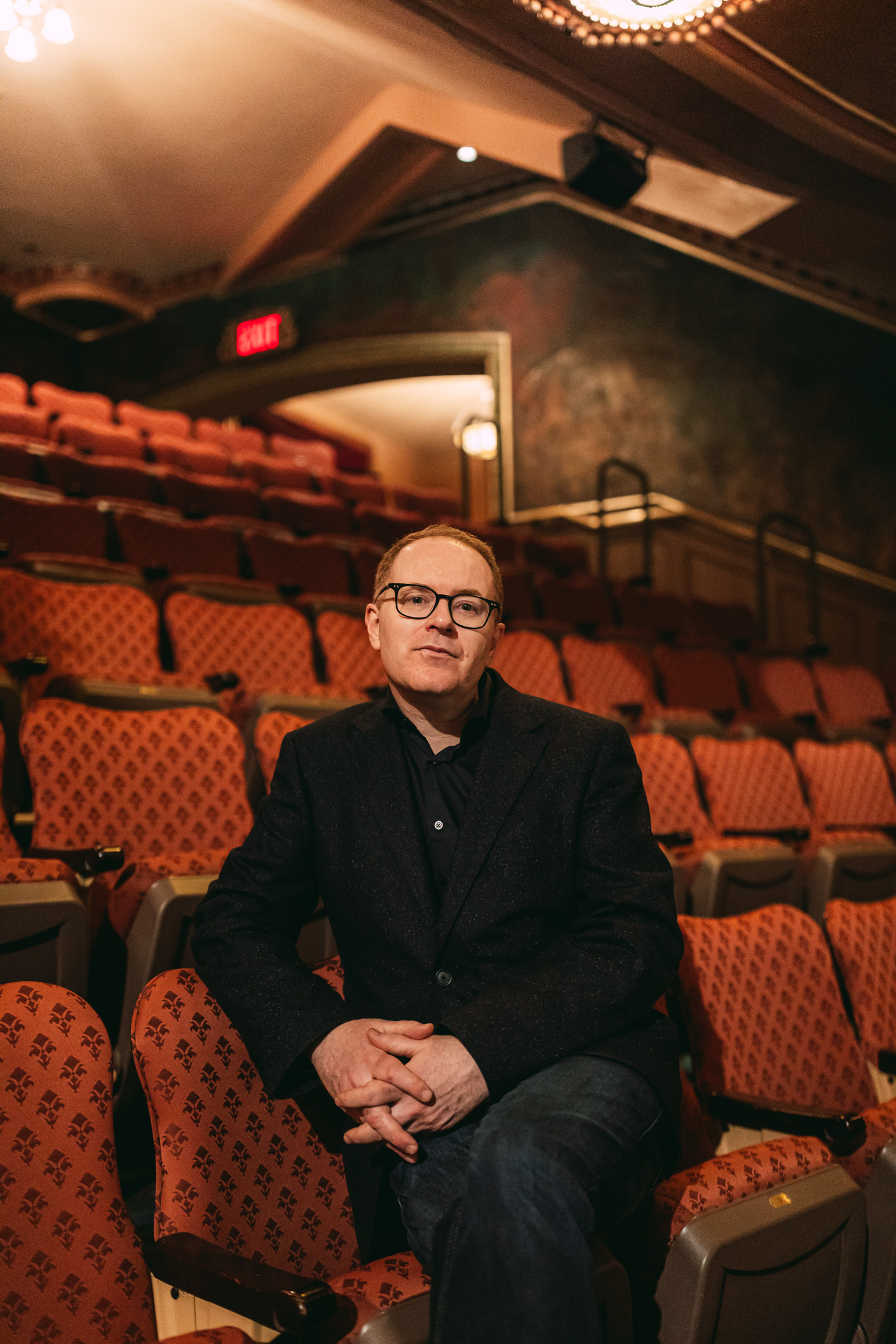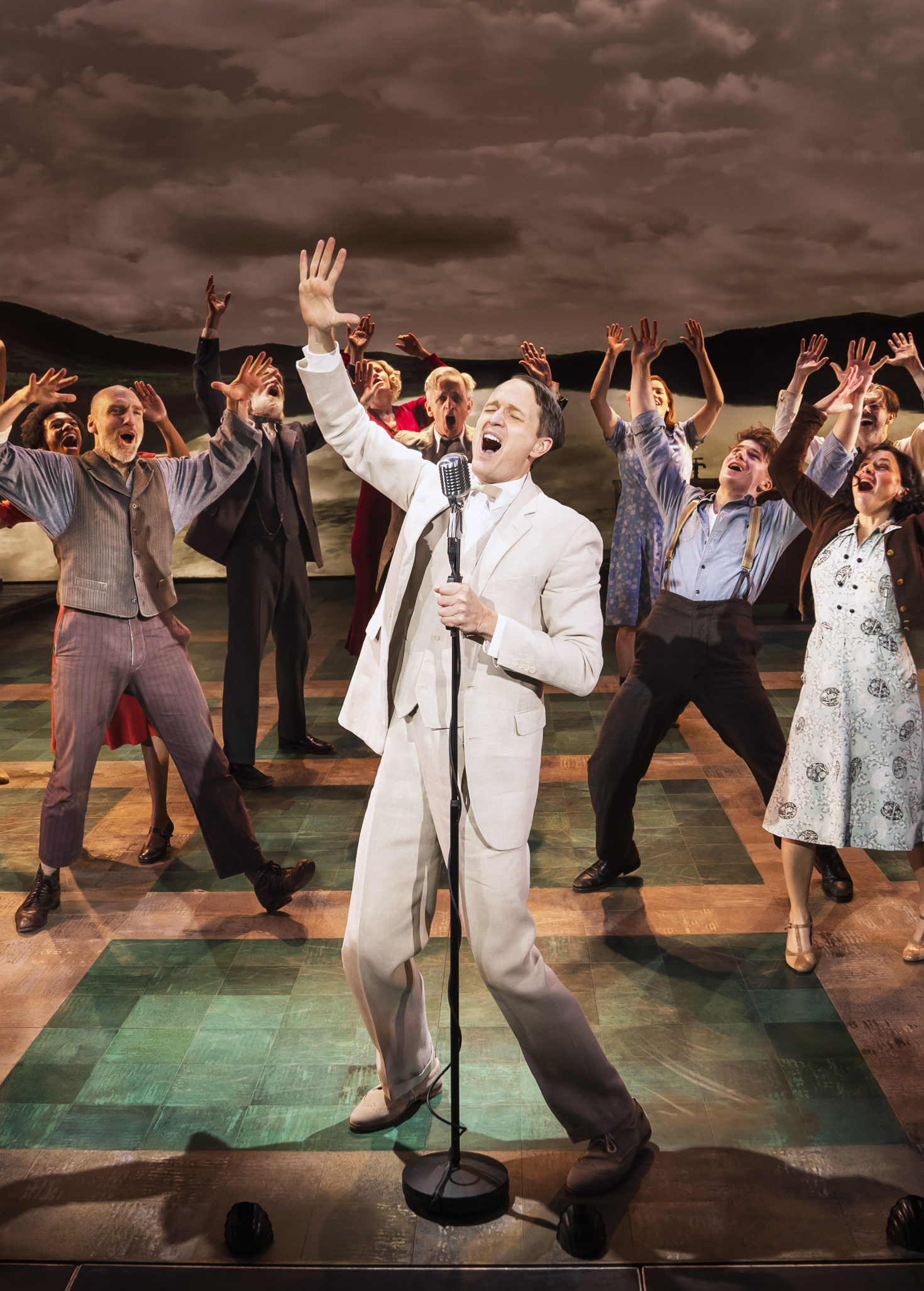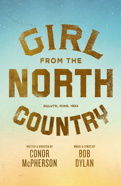How Conor McPherson Captures the Spirit of Bob Dylan in Girl From the North Country


(Photos by Emilio Madrid for Broadway.com)
Conor McPherson, the three-time Tony-nominated writer and director whose musical Girl From the North Country opens on Broadway March 5, sat in his Dublin house with dozens of Bob Dylan albums, inundated with the artists’ 600-song discography. His task: write a musical. “Dylan gave us total freedom to use any of his songs,” said McPherson in an interview with Broadway.com's Beth Stevens. “So, they sent all of his albums to my house. I was just listening to them, just really enjoying it, and if I liked a song, I thought, ‘Well, I’ll put that in.’ And that was it.’”

“I had never done musical theater,” explained McPherson, whose plays Shining City (2006) and The Seafarer (2007) earned Best Play Tony nominations. Perplexed at being approached for the project, McPherson wrote a few pages, striving for a “Eugene O’Neill kind of feeling,” and sent them off to Sony, who was looking “to put together a theater show using Dylan as one of their legacy artists,” he said. “A few days later, we got a message back that Bob Dylan really liked my idea and wanted me to proceed.”
The story that won over Dylan, about a boarding house of down-and-out Americans struggling to make it through a Great Depression winter in Duluth, Minnesota, felt a lot like the kind of deep-felt drama that made O’Neill famous, sharing with Dylan’s music a folk-like commitment to tell plain, relatable stories of real struggle. “I thought, well, if there was a family running a boarding house—and if there’s people coming to stay because they have nowhere to live, because they’re suffering economically—the people coming and going through that house, making relationships, could sing Bob Dylan songs,” said McPherson. “If that all happens before Bob Dylan was born [in 1941], it completely removes him from the equation of these songs, which sets them free because they are universal. That’s how I envisioned it, and that’s what he liked.”
"His lyrics are always so suggestive and universal, coming from the unconscious. In a way, you’re being drawn into the inner-life of the character."
What McPherson heard in Dylan’s music—sitting, imaginably, amid those albums—was a profoundly introspective artist at the whim of his own creations. It reminded McPherson of himself. “I feel like Dylan is an unconscious kind of artist,” he said. “I think that he seems to describe his work as coming through him or coming to him. He just goes with it, rather than it being a conscious thing of sitting down to write a song about something. I think I'm similar in the sense that I don't really choose what I would get an idea for,” he explained. “I don't think of a subject and then decide to write about it. It's just something either comes to you or it doesn’t.”
Taking its cue from that openness to creative feeling, Girl From the North Country evolves less like a traditional musical, where the songs progress an integrated narrative, and more like a play with music, where characters use Dylan’s songs to illustrate their private feelings. “You’re watching a story, and then the characters sing a Bob Dylan song,” said McPherson. “His lyrics are always so suggestive and universal, coming from the unconscious. In a way, you’re being drawn into the inner-life of the character. Their inner-life is almost dreamlike, and it feels like you’re getting to know the character’s inner soul. [The songs] deepens the story, rather than move it forward.”

Girl From the New Country takes some literal notes from Dylan’s history, too. Its setting in Duluth in 1934 is a nod to Dylan’s birthplace, and its timing before his birth is an intentional reference to Dylan’s own artistic development. “Bob Dylan came from a time before rock 'n' roll; there was no rock 'n' roll when he was a kid,” said McPherson. “So, the songs that were coming through his DNA on the airwaves were standards, those old, beautiful tunes. He found his way to [being a rock star], but he came from another tradition,” he said. “Bob’s songs are like hymns.”
That tradition offers Girl From the North Country a religious revival-esque feeling, much of its music rearranged into chorale work. “Theater performances evolved out of religious ceremonies,” McPherson said. “So, it feels very natural and normal. It takes you both deeper into yourself and higher into [the material’s] transcendence all at the same time. Everybody goes into a communal trance, and this music really helps you get there.”
McPherson says that the inclusion of music into a stage narrative—accentuated by Dylan’s vivid numbers—offers new possibilities to the scribe. “Actually, it’s a great shortcut," he said, "because normally as a playwright you’re trying all the time to reach these moments that feel deep and moving and stirring. Then, when you suddenly realize ‘Oh, we can just have music,’ that really fast forwards that feeling. It feels like you’ve been a mountaineer laboring at very high altitudes, and suddenly someone says, ‘You want some oxygen?’”
Watch McPherson's Building Broadway interview below.

Related Shows
Articles Trending Now
- Death Becomes Her, Maybe Happy Ending, Oh, Mary! and More Earn Nominations for the 2025 Broadway.com Audience Choice Awards
- Maybe Happy Ending Will Be Hitting the Road on a National Tour, Launching Fall 2026
- Ali Louis Bourzgui Reflects on Joining Hadestown, His Upcoming Album and Processing the Experience of Tommy
